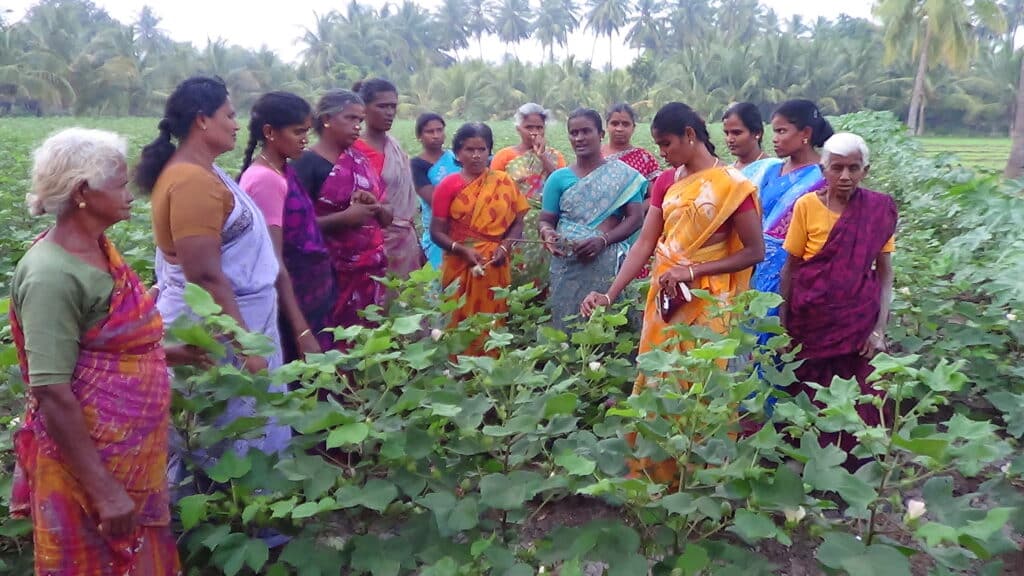Our partners in Ethiopia are getting excited, and so are we.
Thanks to the generous support of our donor members, Grow Further has joined Ethiopia’s push for wheat self-sufficiency and greater food security. As this newsletter’s readers know, we’ve teamed up with agricultural scientists at Madda Walabu University in southern Ethiopia on a mission to marry optimal irrigation strategies with new wheat varieties that will allow farmers there to grow wheat year-round rather than only in the rainy season. MWU’s team sends us periodic reports on their project’s status and progress, and we’ve just received their latest update.
The news? Everything is progressing nicely and at a rapid clip.
“Since its initiation in November 2024, the project ‘Year-Round Wheat Harvests in Ethiopia through Enhanced Irrigation and Management’ has progressed through a series of achievements and challenges,” our MWU partners report.
Field trials are underway at two locations. Both experiments are based on advanced computer modeling simulations. The scientists say the concept works in the computer labs, but now they’re testing these ideas and crop varieties in real-world conditions.
Thirsty crops
In the United States, wheat has long been grown in both summer and winter systems. Summer wheat is planted in spring and harvested in summer, often requiring irrigation. Winter wheat is planted in the fall ahead of the winter snowfall—the snowpack melts in the spring, and the wheat utilizes that moisture to grow in early summer.
In Ethiopia, our partners at Madda Walabu University are now busy growing winter wheat of a different sort.
Ethiopia’s wheat fields are found in the tropics, so it’s generally warm enough to cultivate crops year-round or even too warm for optimal wheat cultivation. However, most of the wheat produced in this sub-Saharan African nation is grown by smallholder farmers who rely on seasonal rains to water their crops. The entire point of MWU’s innovative project is to find the best ways for farmers to produce wheat all year long, even when the rains don’t come.
The team reports that it first finalized computer simulations using their specialized AquaCrop modeling system “taking into account the local soil, wheat crop characteristics, and climate data.” The computer simulations helped the researchers to evaluate the conditions at the two separate locations where they are now experimenting with off-season wheat cultivation. As they reported to us and our membership, “these simulations enabled the team to test and validate the developed irrigation strategies for both surface and sprinkler irrigation under field conditions, ultimately aiming to maximize wheat crop yield and resource allocation.”
Two sites were ultimately selected, in the districts of Adaba and Agarfa. Adaba, where the team is deploying irrigation based on surface river water, is about 2 hours from the Madda Walabu University main campus. Agarfa, where an irrigation system they’ve set up is tapping groundwater, is about a 40-minute drive from their campus.

Choosing the right kind of wheat
The MWU team’s computer models told them that particular varieties of heat-tolerant and high-yielding wheat developed by the Kulumsa and Werer Agricultural Research Centers were their best bet. These wheat varieties were chosen because they would have to be grown outside Ethiopia’s typical rainy period. Yes, they’d receive irrigation, but these varieties still need to be hardy during periods between watering. “These varieties are specifically bred to withstand extreme temperatures, drought, and other climatic stresses,” they said.
Our partners stress that they’ve involved the input and support of stakeholders, meaning smallholder farmers, throughout the process. This is critical as we will need their support to continue these efforts, and these farmers will eventually take over the project and run with it themselves. They also reached out to important local authorities and government agricultural extension agents. This is very much a partnership with the Ethiopian government since MWU, Grow Further, and the government all share the same goals as far as this project is concerned.
Other steps had to be cleared before planting and growing could commence.
After their test sites were chosen, MWU said they had to conduct some additional site research, careful to involve the locals. They next undertook “agronomic field data collection” to improve their understanding of the conditions and variables present at the two sites.
Once all the preparatory work was completed, all that was left was to install the irrigation systems, plant the crops, and then watch and wait. They didn’t have to wait long, judging by the series of photos they shared with us showing them installing the irrigation systems and monitoring plant growth.
By closely following their crops’ progress, the MWU scientists say they can quickly identify potential challenges as they come up and work around them, “contributing to the successful accomplishment of project objectives and the promotion of sustainable wheat production in the targeted districts.”

An experiment in motion
As shown in their photos, the MWU team’s experiment appears to be working. Irrigation is in and operating, and the plants are sprouting from the ground nicely. Eventually, the innovative off-season wheat will be harvested, but that’s hardly the final step in this journey.
Next, they say they are planning “a comprehensive assessment of existing gaps and challenges.” They’ll also look to expand the project to other districts.
They’re also looking forward to measuring the results post-harvest. Mainly, they’re interested in seeing how much wheat the experimental plots yield.
As always, Grow Further stands ready to assist our grantees at Madda Walabu University in Ethiopia with any technical help or advice they may need. And it goes without saying that we are deeply grateful for the support of our donors who made this all possible.
— Grow Further
Photo credits: Courtesy of Madda Walabu University.

